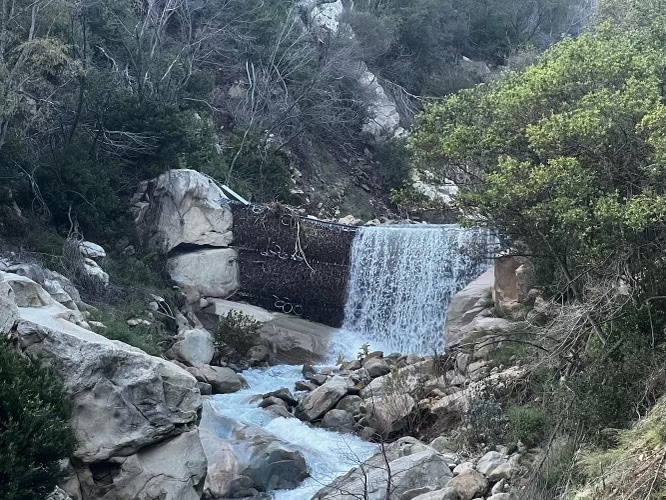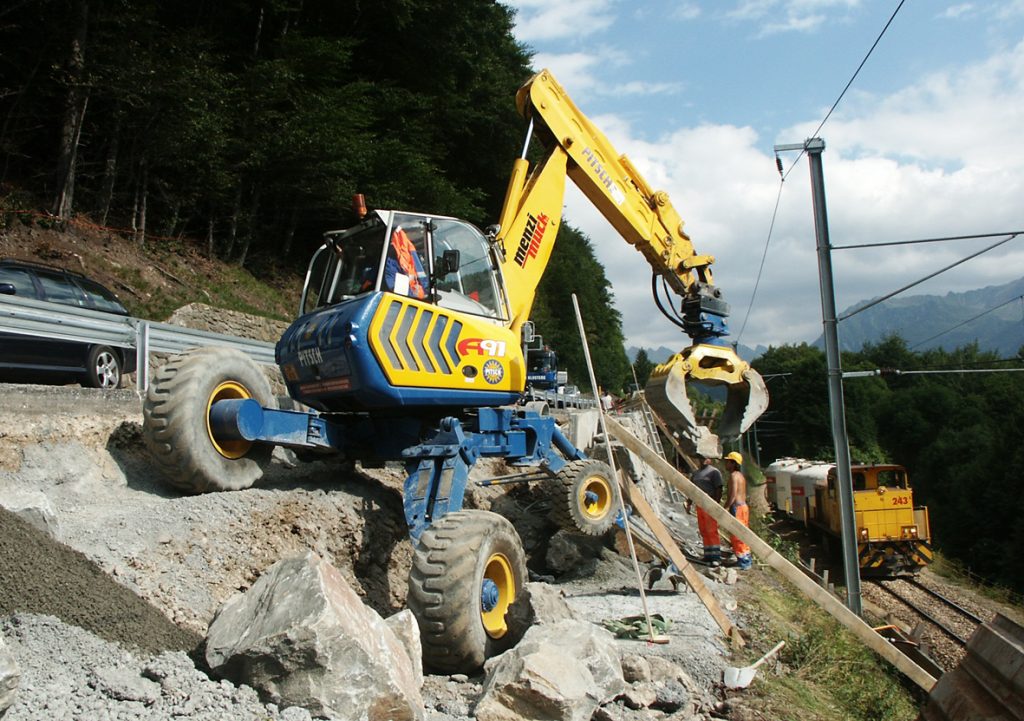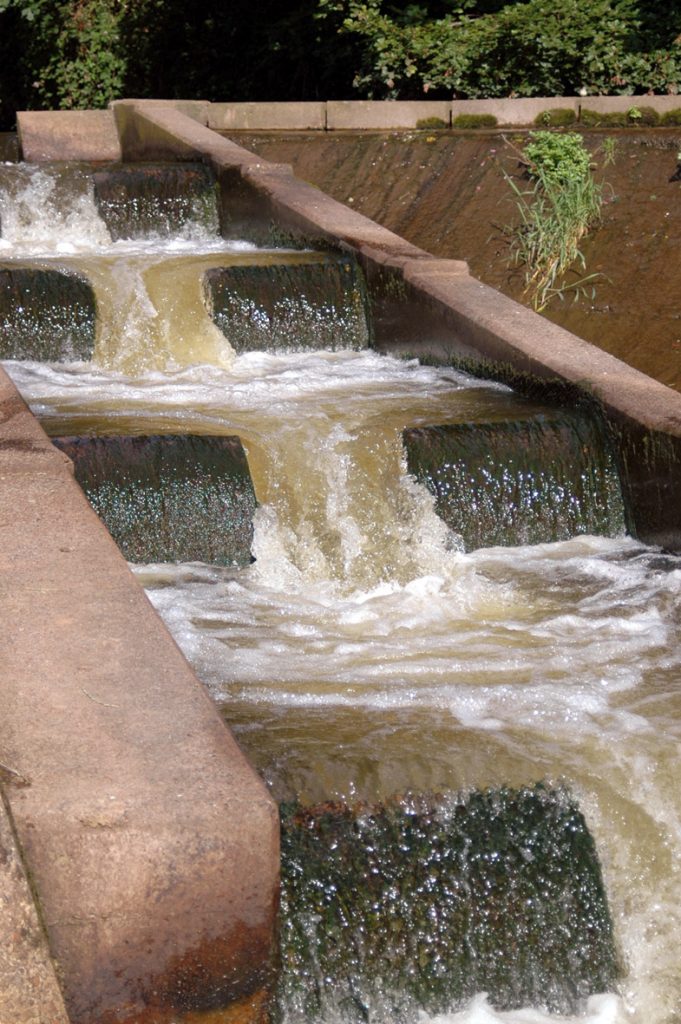Montecito’s Watershed Moment

Exactly five years ago on this day, I was working with The Partnership for Resilient Communities (TPRC) to help develop a plan to contain Montecito’s occasional debris flows. Since a lot of folks are relatively new to Montecito, now is a particularly poignant time to look back at where we’ve come from, what’s been achieved with our moody and unstable terrain (two debris flows in five years), and where we need to go from here.
TPRC was formed roughly five years ago because post-January 9, 2018, it didn’t sit well with a bunch of us that Montecito was simply at peril, and there was nothing to be done about it. Fortunately, the human capital up here is second to none, and many of your fellow citizens were concerned, activated, and extremely generous. Quickly we learned that there are other places around the world more used to dealing with debris than us, and were therefore more experienced than us, and that’s what led us to the “Swiss solution.”
Debris Flow – A Dangerous Misnomer
But first this word about debris flow, which I believe is a horrible misnomer. It’s actually a terrible misnomer. When I think about “debris” I think of crumbs on a table or broken shards of taillight in a fender bender. I’ve always thought “debris flow” should be called a debris torrent because generally speaking a torrent of anything is definitely something to be avoided. Instead, on the evening of January 8, 2018, people thought the heavy rains up on our mountain range might even lead to a fun adventure. I know people who camped out and waited for it with s’mores and lanterns and thought it would be an awesome thing to Instagram.
What we actually learned is that “debris” can be boulders the size of buses and cars crushed like soda cans bound for the recycler. The debris mass can be large and move upwards of 35 miles an hour. And there’s an unlimited supply of it. Our mountains are actually mounds of debris. We also learned that boulders are not potatoes. They don’t grow in place. They come from up high and in fact the way they get round is by rolling downhill. Think about that. That boulder you made the centerpiece of your Zen garden got round by rolling downhill. That boulder did not get where it is via a very Zen experience.
It Was the Best of Times, It Was the Worst of Times
On January 10, 2018, I experienced one of the most moving things that’s ever happened in my life.
As part of my work with TPRC, I reached out to world-class geologists around the globe. I did this as a complete civilian, simply via social media (the only good use of social media I’ve ever experienced).
I just reached out to world experts, said I was a guy who lives in Montecito, and we were hoping to learn more about what could be done to keep a disaster like the one we’d just experienced from happening again. And do you know who got back to me? What percentage of the global geology experts we reached out to? Every single one. It was the greatest view of human decency and compassion I ever personally witnessed. And it led us to…
The Swiss Solution

What we learned from global experts is the Swiss had been at debris containment for quite some time. Because of snowpack melt every spring, certain towns in Switzerland sometimes experience as many as a dozen debris flows a year.
Out of necessity, the Swiss really got debris flow management down to a science. Debris nets like the ones we installed were originally repurposed submarine nets, later they became avalanche nets, rock fall nets, and ultimately debris nets. Our cohorts in the Alps also developed special debris-clearing vehicles like the Menzi Muck and Kaiser “Spider” – walking excavators that climb the Alps and remove rocks from impossibly steep slopes and are low impact on our terroir due to the fact they get helicoptered in. Thanks to walking excavators, the Swiss literally remove debris from atop Mont Blanc – I’m talking about the mountain not the pen.
In a nutshell, thanks to a lot of hard work and contributions or brilliance, not to mention funds from around the world but especially locally, we learned that there are four things to prep in order to be ready for the next big flow: (1) Better evacuation protocols (which were successfully developed by our Office of Emergency Management working in cahoots with our local first responders). (2) Revegetation (again, this is mostly under God’s purview). (3) Enhancement of our debris basin system, which the County (Santa Barbara Flood Control) immediately got to work on. And (4) TPRC got to work raising funds locally in order to implement the Swiss solution.
Within a month of our January 9, 2018 debris flow, TPRC raised money for geo mapping of our local hazard. We purchased military grade LIDAR topographical maps from a defense contractor that we then shared with the geology department at UCSB. We then continued to raise enough money to buy and install a group of test case nets… while concerned Montecitan Curtis Skene got to work organizing his neighbors to permanently vacate Randall Road so there’d be an actual physical space for the County’s new debris basin to live. TPRC put in for a “temporary permit” because time was of the essence and that was the fastest permit we could get. And, as we just re-learned two weeks ago, the most perilous time for post-fire earth movement is within the first five years after a major fire. As everyone knows, our most recent debris torrent occurred five years to the day after the 2018 Thomas Fire debris torrent.
Patchwork of Mitigations

You might ask why have basins and debris nets and the answer is simple: the problem is that big. The new Randall Road Debris Basin is useful but can’t hold everything that comes down the hill. The debris nets do the same thing a basin does – contain debris – but they do so further uphill to keep the flow from building up mass and momentum. In fact, there are a bunch of different things people do around the world to influence the debris path, including another misnomer called “soil nails” (which aren’t really nails but spikes 10 feet – and often MUCH more – long) that literally nail the earth down and adhere it to itself. The challenge is: California is not Switzerland or Japan, where they will literally shave down a mountain if people are in peril. Here we answer to the strictest environmental codes of any place on Earth. Which is another reason for the nets. The nets are undisruptive to the natural flow, allow animal passage, and allow the spawning of everything that likes to spawn up there. There are even things called “fish ladders,” which can enhance the net system and allow things that like to swim upstream to do so.
Net Result: The Proof Is in the Pudding
Clearly, thanks to our true partnership with County agencies and local electees and private landowners, our community did much better two weeks ago than when a nearly similar water event occurred here in 1969. Two weeks ago, as in 1969, our hills were saturated with a similar amount of rain so we pretty much knew there would be “movement” up in the hills. In terms of TPRC’s Swiss solution, one net filled completely and held its capacity of debris and another net filled partially. A few folks asked why the other nets “didn’t do anything” to which the answer is: Although we’re Montecito and may in fact have a disproportionate amount of influence, we do not get to tell God where to send the debris.
Meanwhile TPRC’s Executive Director (and retired Fire Chief) Pat McElroy has commissioned a report by geologist Larry Gurrola detailing every torrent event that has happened here, how much debris there has been, and where it has gone. Forewarned is forearmed.
What’s the Plan Going Forward? And the Clock Is Ticking…
Recent events proved the nets work and we’re about to prove the nets are easily emptied. We will empty the nets with walking excavators, as promised. But our temporary permit for the nets is set to expire at the end of this year. In theory that means removal of the nets could be ordered, though no one’s asking for that at this point or thinks it’s a good idea. The County of Santa Barbara would like to see McElroy and TPRC apply for a new temporary permit for the nets, and for TPRC to again approach individual landowners to re-up permission for the nets. In a nutshell, the County would prefer to keep the ownership of the nets TPRC’s as well as the responsibility of emptying them. That’s quite a heavy lift for a small local NGO, even a hardworking and resourceful one.
I believe the County has greatly benefitted from TPRC’s research and science and TPRC’s template, not to mention all the “debris” we’ve held in place on the mountain isn’t stuff the County has to manage. TPRC’s strength is finding innovative solutions and implementing them quickly in a way that slow-moving governments rarely can. Meanwhile the County and FEMA (which is already stepping up with funds for our most recent event) are great at moving heaven and earth as only government can. We hope the County will take the baton from here and we look forward to supporting them every which way we can.







